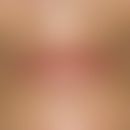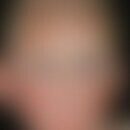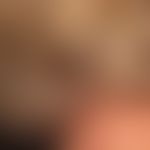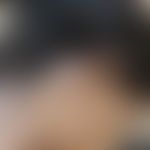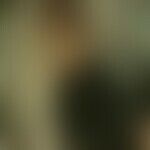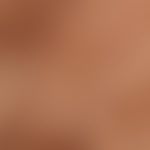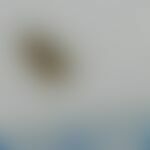Synonym(s)
DefinitionThis section has been translated automatically.
Pediculosis due to infection with the head louse (Pediculus humanus capitis), a 2.0-3.5mm long, motile, slender parasite of the capillitium.
Occurrence/EpidemiologyThis section has been translated automatically.
Infestation with head lice is increasing worldwide. Pediculosis capitis is considered the most common epizoonosis in children. More than 100 million infestations per year are suspected worldwide. In industrialized countries, the prevalence is estimated at 1-3%. The incidence in children is 598/1000. Small endemics (kindergartens, schools) are reported time and again.
You might also be interested in
EtiopathogenesisThis section has been translated automatically.
The transmission is mostly direct from person to person, rarely via other articles of daily use such as caps, combs, brushes.
ManifestationThis section has been translated automatically.
Occurring mainly in children (mostly aged 5-11) and people with long hair. Head lice are transmitted especially in the winter months.
LocalizationThis section has been translated automatically.
Head hair (back of the head!), temporal region, nape of the neck, retroauricular region. Rarely infestation of beard and pubic hair.
ClinicThis section has been translated automatically.
DiagnosisThis section has been translated automatically.
Nep detection by inspection (possibly with magnifying glass) and nep comb. Nits adhere to the hair shafts and are visible to the naked eye as fine, bud-like nodules about 0.8 mm in size. Dark nits still contain larvae, light nits are empty shells. Unlike dandruff, nits are difficult to strip off. It is recommended to go through the hair strand by strand with a lice comb after a conditioner. After each comb stroke the comb should be wiped off on a light-coloured cloth. The rapidly moving lice are usually not visible during inspection.
Differential diagnosisThis section has been translated automatically.
General therapyThis section has been translated automatically.
Ban from school, no visit to kindergartens.
Sanitation of the environment (contacts, wigs, hairpieces, hats, combs, etc.), keep items sealed in a plastic bag at room temperature for 3 days.
Wash clothing and bedding at 60ºC (boil wash) or dry clean.
External therapyThis section has been translated automatically.
Standard therapies: Not only the lice but also the embryos in the nits must be safely killed!
- Combing out the moistened hair treated with a conditioner (or better before with Malathion [Organoderm; available via the international pharmacy]) strand by strand with a fine nit comb (tooth spacing 0.2 mm).
-
Dimeticone preparations(=polydimethylsiloxane; e.g. EtoPril, Nyda, Jacutin Pedicul Fluid) or combinations of silicone oils and castor oil (e.g. Itax) act by the physical principle of forming a breathable oil or silicone film. This suffocates the lice.
- Aesculo Gel L silicone/castor oil: apply for at least 1-2 hours and then wash out.
- Jacutin Pedicul®: apply for 10 minutes, then comb out the hair with a nit comb, then wash hair with shampoo lukewarm. The application should be carried out 2 times at intervals of 3-7 days. Can be used at any age. Also in pregnancy and during breastfeeding.
- EtoPril ® a 4% dimeticone application; exposure time: 8 hours. Then wash out.
- 1% permethrin cream(e.g. Nix cream; not approved in Germany, off-label use!) or 0.5% permethrin spirit (e.g. Infectopedicul) with good antiparasitic but also relatively good ovocidal effect. Single rubbing of the hair over 30-45 min., followed by combing out the nits with a fine nit comb.
Alternative therapies:
- Pyrethrum extract, e.g. Goldgeist forte Lsg., applied to hairy head and spread. Leave on for 30 min., then rinse with clean water. Cave! For infants, perform procedure only under medical supervision! Substance has an irritating effect on the scalp and can cause burning when applied. Do not apply to mucous membranes, protect eyes! Pyrethrum belongs to the pyrethroids, a chemically not exactly defined mixture of various pyrethrins, cinerins, cinerines, cinerines, cinerines, cinerines, cinerines, cinerines, cinerines. Pyrethrins, cinerins, jasmolins. Pyrethrins are insecticidal ingredients of Chrysanthemum cinerariifolium and other chrysanthemum species; chemically they are esters of chrysanthemum acid or pyrethric acid.
- Allethrin I, a synthetic analog of pyrethrin ( pyrethroids, synthetic structural relatives of naturally occurring pyrethrins), e.g., Jacutin Pedicul Spray. Spray on the hairy head, leave to act for 10-30 min, rinse. Warning: The preparation is irritating to mucous membranes. Do not use on asthmatics.
Special questions
- Treatment of nits: Pre-treatment with a 3% vinegar solution (1 part 6% table vinegar/2 parts water) to dissolve the glue with which the nits adhere to the hair shaft. The hair is soaked with the vinegar solution, a towel is moistened and wrapped around the head. After an hour, remove towel, comb out nits with lice comb.
- Pregnancy: Use of herbal pyrethrum extracts (e.g. Goldgeist forte) or allethrin (e.g. Jacutin Pedicul Spray, contraindication in 1st trimester), see above.
- Matted hair: Cutting off the hair is strongly recommended!
- Pyoderma: In case of pronounced pyoderma dermatitis of the capillitium and neck with lymph node swelling, internal use of trimethoprim/sulfamethoxazole(e.g. Cotrimox Wolff; adults and children over 12 y. 2 times/day 2 tbl.) or a broad-spectrum antibiotic (e.g. doxycycline 100-200 mg/day p.o.) for 6 days is recommended. Trimethoprim/sulfamethoxazole kills live (blood-sucking) head lice.
- Post-treatment of the inflammatory changed capillitium with a glucocorticoid containing O/W emulsion (e.g. Hydro-Wolff, as prescription: hydrocortisone emulsion hydrophilic 0,5-1%).
Internal therapyThis section has been translated automatically.
If local therapeutic methods fail, oral ivermectin can be prescribed as a single oral dose (200 ug/kgKG p.o.) with good success ( off-label use; evidence level Ib).
For pyoderma: trimethorpime/sulfamethoxazole is one of the most common triggers for SJS/TEN in children and should no longer be used (see page 543, Pediatric Dermatology Höger Edition 2021).
NaturopathyThis section has been translated automatically.
Preparations containing coconut oil (e.g. Aesculo Gel L)
Soybean oil (Mosquito Lice Shampoo)
Less well documented is the effectiveness of tea tree oil, lavender oil and anise.
Note(s)This section has been translated automatically.
- Head lice can only crawl, not jump!
- There is no medical obligation to register pediculosis capitis according to § 6 IfSG (Infektionsschutzgesetz). However, the managers of community facilities (e.g. kindergartens, schools) are obliged, according to §34 Abs. 6 IfSG, to inform the responsible public health department immediately of any detected head lice infestation and to provide personal information.
- Infestation with head lice is not dependent on hygienic conditions. Frequent hair washing at most leads to "clean lice"!
- Lindane has been banned by the WHO for use on humans since 2008!
LiteratureThis section has been translated automatically.
- Khosidov O et al (2010) Oral ivermectin versus malathion lotion for diffcult to treat head lice. N Engl J Med 362: 1199-1201
- Feldmeier H (2017) Putting the kibosh on head lice. Hautnah Dermatologie 33: 38-40.
- Hausstein UF (1991) Pyrethrins and pyrethroids (permethrin) in the treatment of scabies and pediculosis. Dermatologist 42: 9-15
- Jones KN et al (2003) Review of common therapeutic options in the United States for the treatment of pediculosis capitis. Clin Infect Dis 36: 1355-1361
- Nenof P (2014) Pediculosis capitis. Hautnah 30: 37-39
- Nofal A et al (2010) Oral ivermectin against head lice: a comparison with 0.5% topical malathion lotion. JDDG 8: 985-989
- Sadhasivamohan A et al (2021) Pediculosis capitis with Id reaction and plica polonica. Am J Trop Med Hyg 105: 862-863.
- Steinhorst M (2004) Coconut oil as a therapeutic alternative. Dermatologist 55: 329-330
- Witkowski JA, Parish LC (2002) Pediculosis and resistance: the perennial problem. Clin Dermatol 20: 87-92
Incoming links (18)
Acetic acid; Dimeticon; Dimeticon; Hair nodules; Head lice; Head lice; Head lice infestation; Lice; Lice eczema; Nits; ... Show allOutgoing links (24)
Allethrin i; Castor oil; Chrysanthemum; Contagious impetigo; Dimeticon; Doxycycline; Glucocorticosteroids; Hydrocortisone emulsion hydrophilic 0.5-1; Lavender real; Level of evidence; ... Show allDisclaimer
Please ask your physician for a reliable diagnosis. This website is only meant as a reference.
